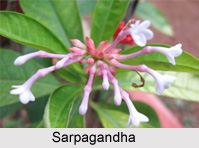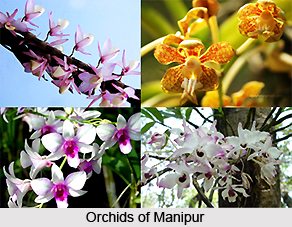 When the `Cannon Ball Tree` is in its full maturity and bears flowers or fruits, it is such a beautiful tree that demands instant attention. However, at the immature period, the tree is very ordinary and common. The scientific name of the tree is `Couroupita Guianensis` and it derived from the `Lecythidacae` family. In Bengali and Tamil, it is known as `Nagalingam` and in Hindi, it is called `Shivalingam. This tree is native of the `Guianas` of South America. A twist of long woody branches hangs from the base of the trunk upward and they are quite distinct from the leaf-bearing branches and also from the wood of the tree. These branches are usually up to 90 cm in length and bear the long fatty flowers and circular green buds.
When the `Cannon Ball Tree` is in its full maturity and bears flowers or fruits, it is such a beautiful tree that demands instant attention. However, at the immature period, the tree is very ordinary and common. The scientific name of the tree is `Couroupita Guianensis` and it derived from the `Lecythidacae` family. In Bengali and Tamil, it is known as `Nagalingam` and in Hindi, it is called `Shivalingam. This tree is native of the `Guianas` of South America. A twist of long woody branches hangs from the base of the trunk upward and they are quite distinct from the leaf-bearing branches and also from the wood of the tree. These branches are usually up to 90 cm in length and bear the long fatty flowers and circular green buds.
For the interesting and remarkable grouping of stamens and style, the scented flowers of the `Cannon Ball Tree` are near about 7.5 cm. across and they have got a beautiful mixture of pale yellow, white and shades of deep pink colour. The six thick petals are bowl-shaped and within them lay a circle of barren stamens without pollen grouped around the ovary. A ladle-like accessory pokes out to one side and curve protectively over the ovary. This odd arrangement ensures the fact that if the transfer of pollen by an insect from another flower is not accomplished then self-pollination will take place. The reason behind this is that when the flower starts to dry up, the appendage of pollen-bearing stamens closes over the style that is thus pollinated.
 The fruits of the tree are also extraordinary by themselves. They are hard and brown balls that attain the size of a coconut and justify the fact why the tree was given the common name of `Cannon-ball Tree`. They take eight to nine months of time to get matured and also contain a group of very unpleasantly smelling and pale yellow pulp. The tree is considered as evergreen and it also sheds its foliage at the end of the season. Actually, though the old leaves fall together, the rapidness of appearing the new ones make sure that the tree is never bare for more than about a week. The new leaves are rich and bright green in colour for a short time but soon they become dark. They are clustered mostly at the ends of the branchlets and are each of them is about 12.5 cm in length. They are thinner in proportion and pointed and taper regularly to their short stalks.
The fruits of the tree are also extraordinary by themselves. They are hard and brown balls that attain the size of a coconut and justify the fact why the tree was given the common name of `Cannon-ball Tree`. They take eight to nine months of time to get matured and also contain a group of very unpleasantly smelling and pale yellow pulp. The tree is considered as evergreen and it also sheds its foliage at the end of the season. Actually, though the old leaves fall together, the rapidness of appearing the new ones make sure that the tree is never bare for more than about a week. The new leaves are rich and bright green in colour for a short time but soon they become dark. They are clustered mostly at the ends of the branchlets and are each of them is about 12.5 cm in length. They are thinner in proportion and pointed and taper regularly to their short stalks.
The dissemination of the tree can be from seeds or by the suckers that are produced in quantity. The tree prospers in its best when it is placed in humid and low country districts. The `Cannon-ball Tree` possess very little commercial importance. Since the wood is of substandard quality and there is little or no heartwood, it is unfit to be utilised in any useful activities.











